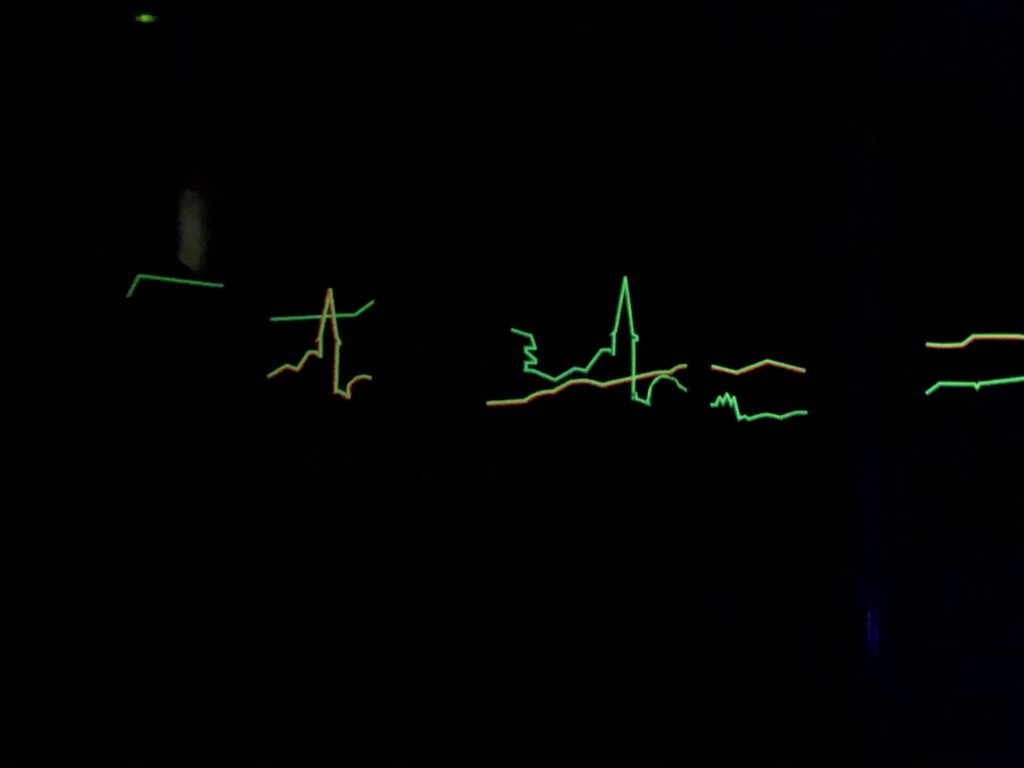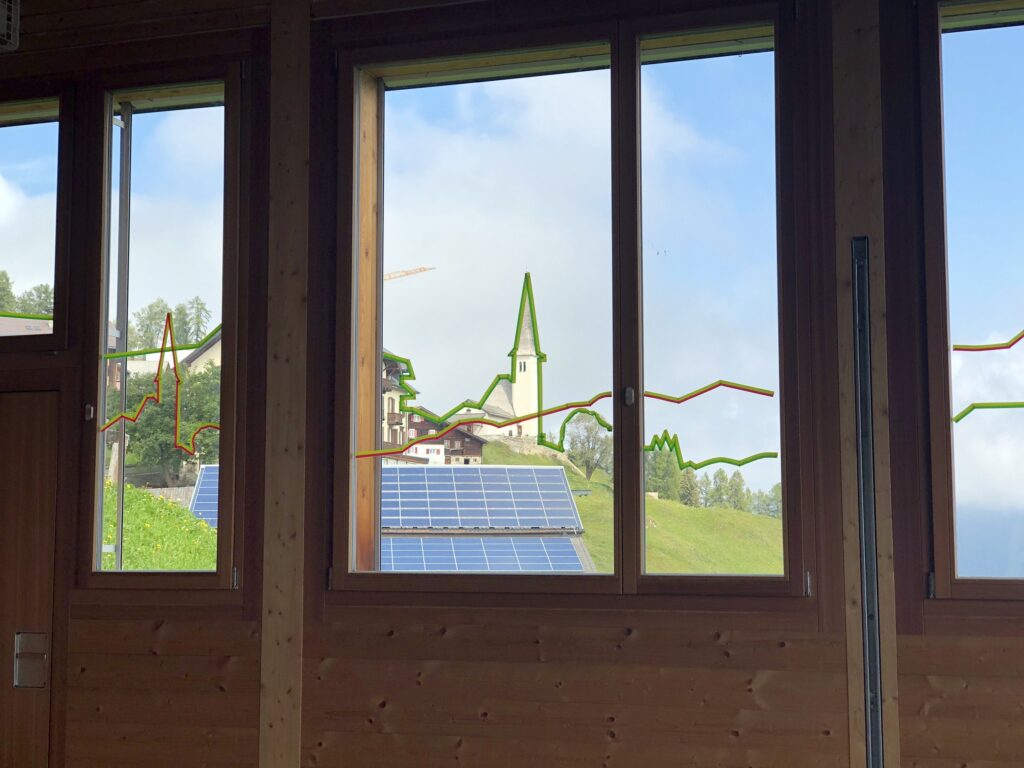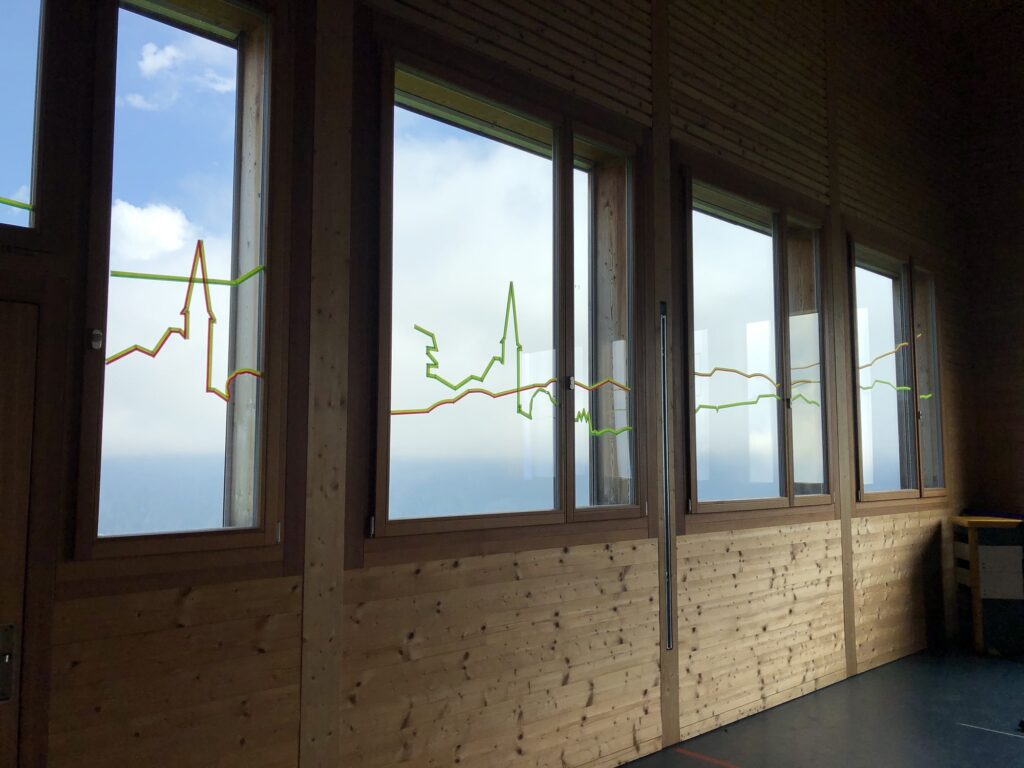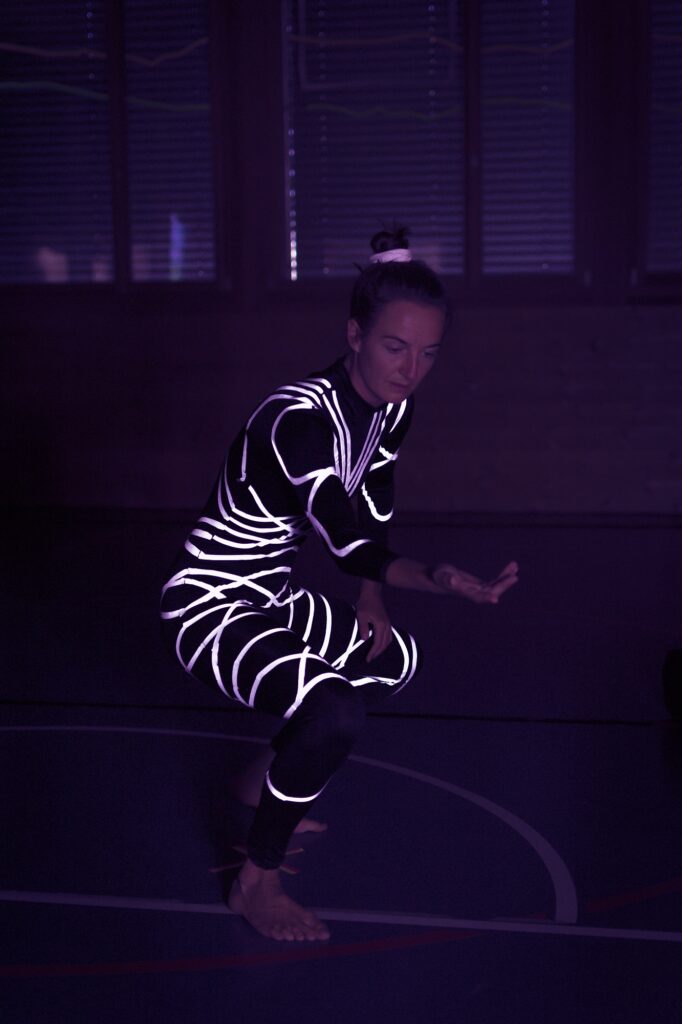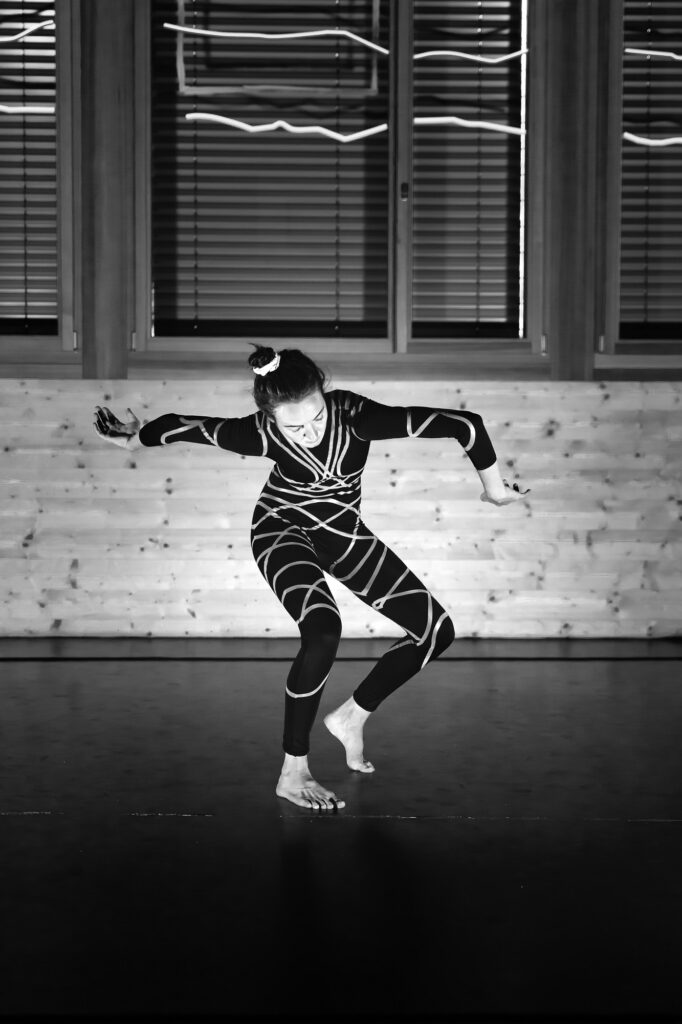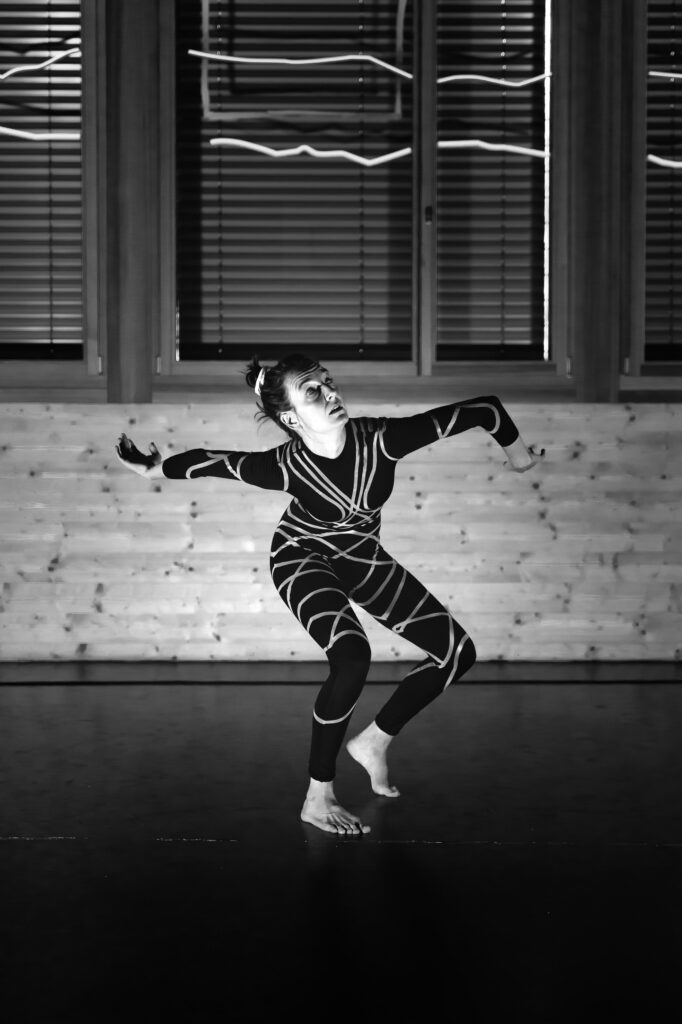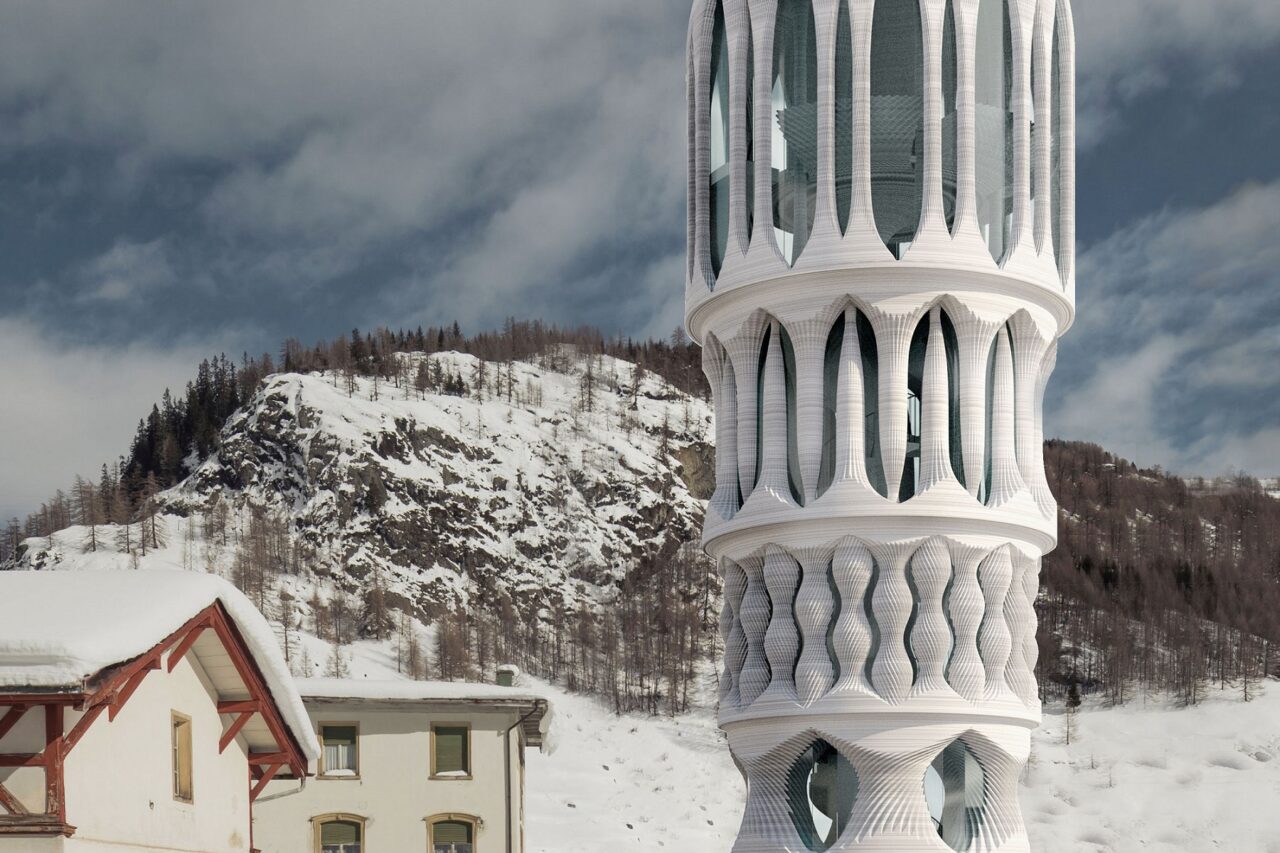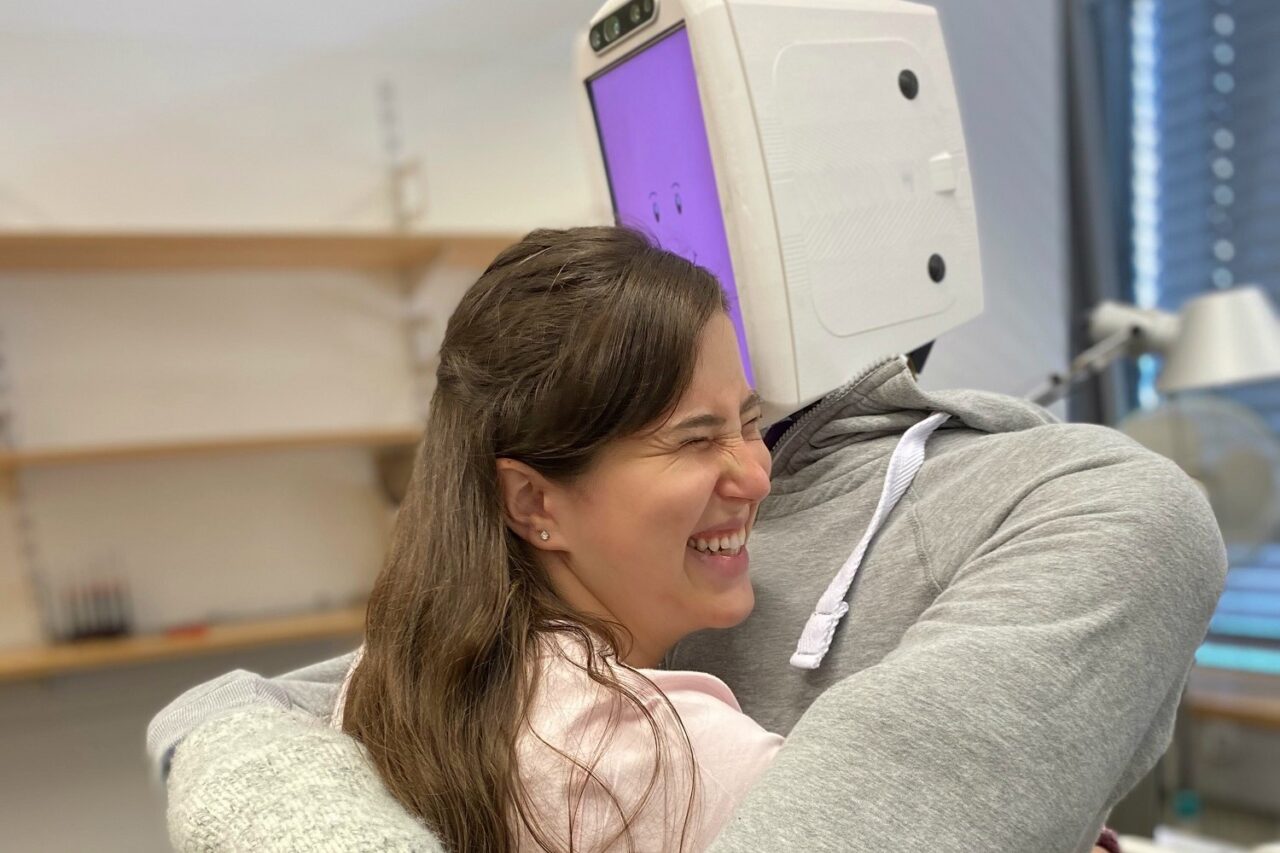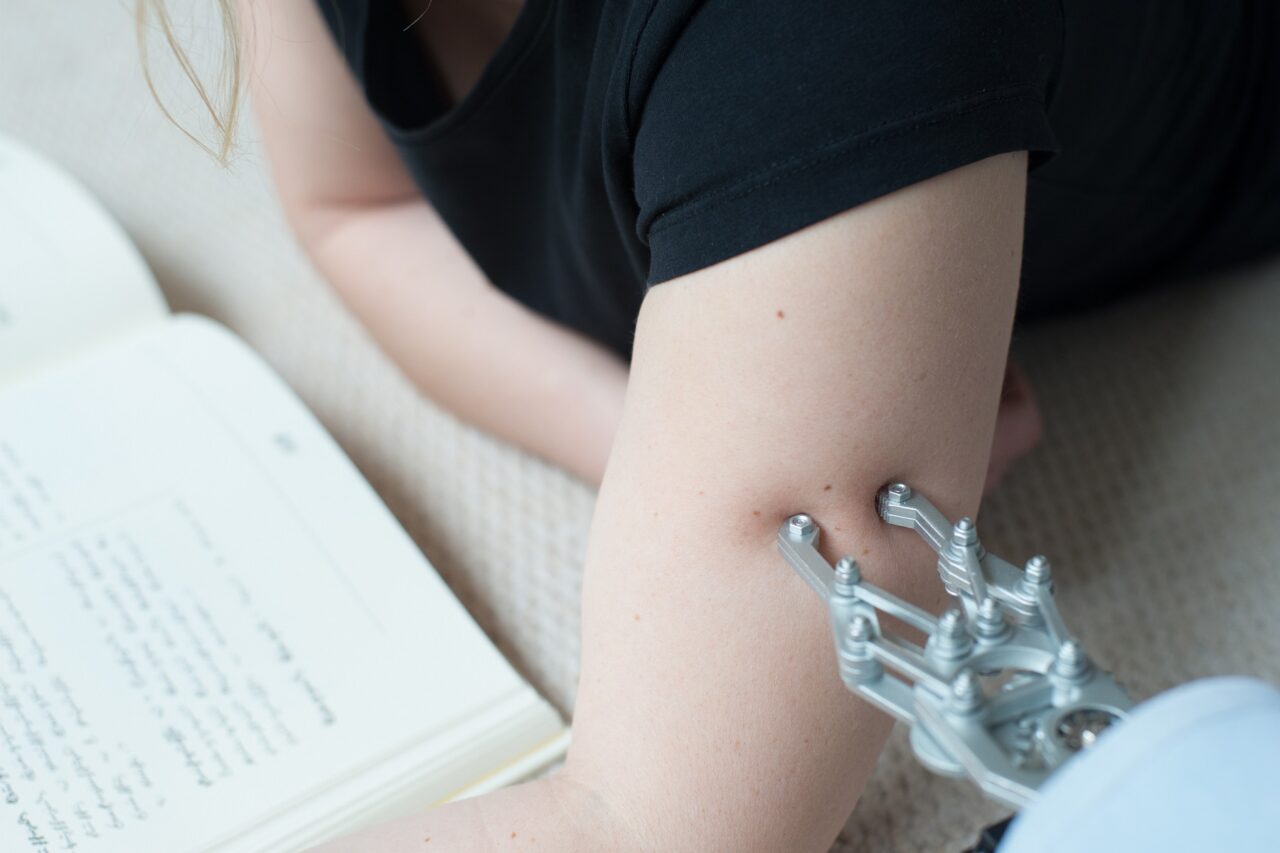About one year ago, my thesis advisor, Professor Robert Riener, asked us if we were interested in participating in an art exhibit, the biennal Art Safiental in Graubünden. Since art and design have always been a passion of mine, I was intrigued by the idea of combining the two with my research on exosuits – so I jumped right in.
Landscape Art meets Robotics Science
by Marie Georgarakis, doctoral student, 24 September 2020

The Safiental valley is a particularly beautiful place in the Swiss mountains of Graubünden and can be highly recommended for a hike or a longer stay. (photo credit: Marie Georgarakis/ETH Zurich)
On the first weekend of September, a couple of ETH Zurich robotics researchers broke out of their labs and set out for the Safiental valley. Their quest was to fuse their research with the landscape of the Swiss Alps as part of the ETH Science Weekend at the biennal Art Safiental.

Lorenz, the Myosuit and the ANYmal setting off to conquer the mountain. (photo credit: Florian Haufe/ETH Zurich)
Our lab has been developing textile-based robotic assistive exoskeletons, so called exosuits, for a handful of years now. The first project, an exosuit for the lower limbs called the Myosuit, was recently successfully commercialized by our ETH Spin-off Myoswiss. The Myosuit supports the gait of users with a movement impairment during leg-extension phases. It is particularly helpful during stair ascent and uphill walking – thus perfect for hiking.
Of course, the Myosuit users should not walk up the mountain all by themselves. We therefore invited the ANYmal to join us on our hike. Like the Myosuit, the ANYmal was brought to the product stage by an ETH Spin-off called ANYbotics. It is a four-legged robot developed for industrial inspection of places that are too dangerous for humans. Accordingly, we were curious to see how it would perform in the rough terrain of the Swiss mountains.
Taking our devices outside the lab is still a rather new venture and therefore particularly challenging. The environment is far less controlled than in the lab, and often it is not possible to predict how the robot will react when exposed to these new circumstances.
While the Myosuit can effectively support even unimpaired users during uphill walking, it is primarily designed to assist people with a gait impairment. We were therefore particularly thrilled that one of the first regular Myosuit users, Lorenz Schwärzler, was up for the challenge and came with us to the mountains. Lorenz has incomplete tetraplegia, which in his case means that he has trouble moving his legs, stabilizing his trunk and bearing his own weight. Without the Myosuit, he can walk a couple of steps with a cane. With the Myosuit, and on even terrain, he can walk much further. To our delight, he skilfully managed to negotiate the mountain terrain, something that he had not done since his accident about 20 years ago. As getting all the way up to the mountain was still a little too hard for him, one of the Myoswiss co-founders, Jaime Duarte, took over and hiked in the Myosuit all the way up the mountain. Together with the ANYmal, which also needed a little help from its supervisors, they managed to reach the peak at Tenner Chrüz.
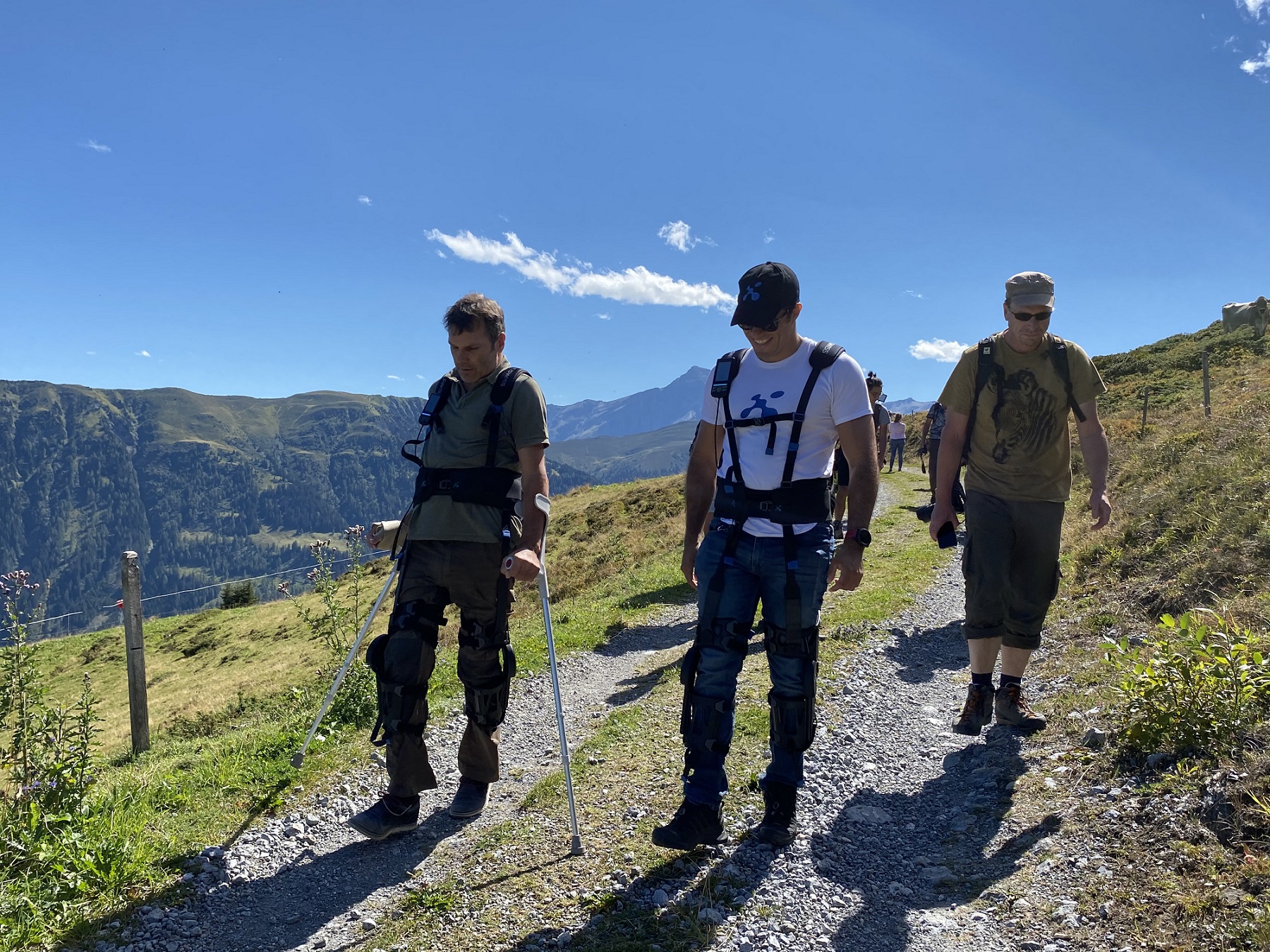
Lorenz and the robots were accompanied by Jaime Duarte, co-founder of Myoswiss (middle) and a small crowd of spectators, researchers and journalists. (photo credit: Robert Riener/ETH Zurich)
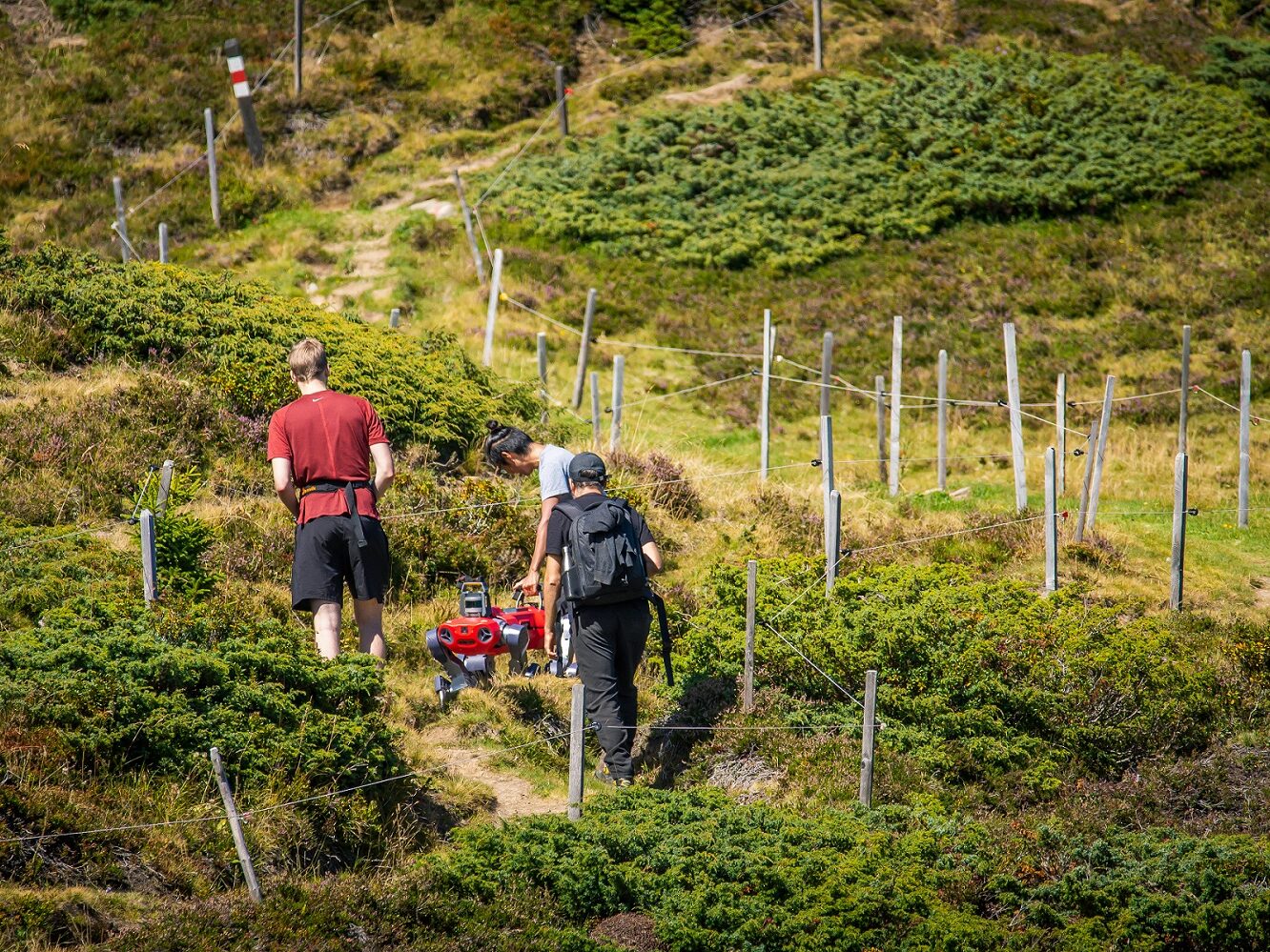
Though it was able to negotiate most of the terrain perfectly, the ANYmal occasionally needed a little help in the steeper parts of the mountain trial. (photo credit: Florian Haufe/ETH Zurich)
Meanwhile, down in the village of Tenna, art and research merged in a different way. Adopting different topics we regularly encounter in our research, I created a dance performance together with the choreographer Marie Nüzel and the DJ Roman Saratz. The prevailing theme was the digitalization of human movement – in accordance with the theme of the current Art Safiental, “Analog|Digital”. Dance is the most expressive form of human movement, kept alive by the continuous concatenation of action patters. Using stroboscopic light, we discretized the continuity of these human movement. Similarly, we showed the lines of non-extension on the human body on the dancer’s costume, breaking the body apart into the pieces that individually extend and contract during movement.

Stroboscopic light flashes were used to visualize the digitalisation of human movement, similar to the concepts behind motion capture that we use to record human movement in our research. (photo credit: Florian Haufe/ETH Zurich)
Coming back to Zurich after this long weekend of art and science, the feeling that something special had happened lingered. Merging my science with art definitely opened up new points of view on my research.
Links
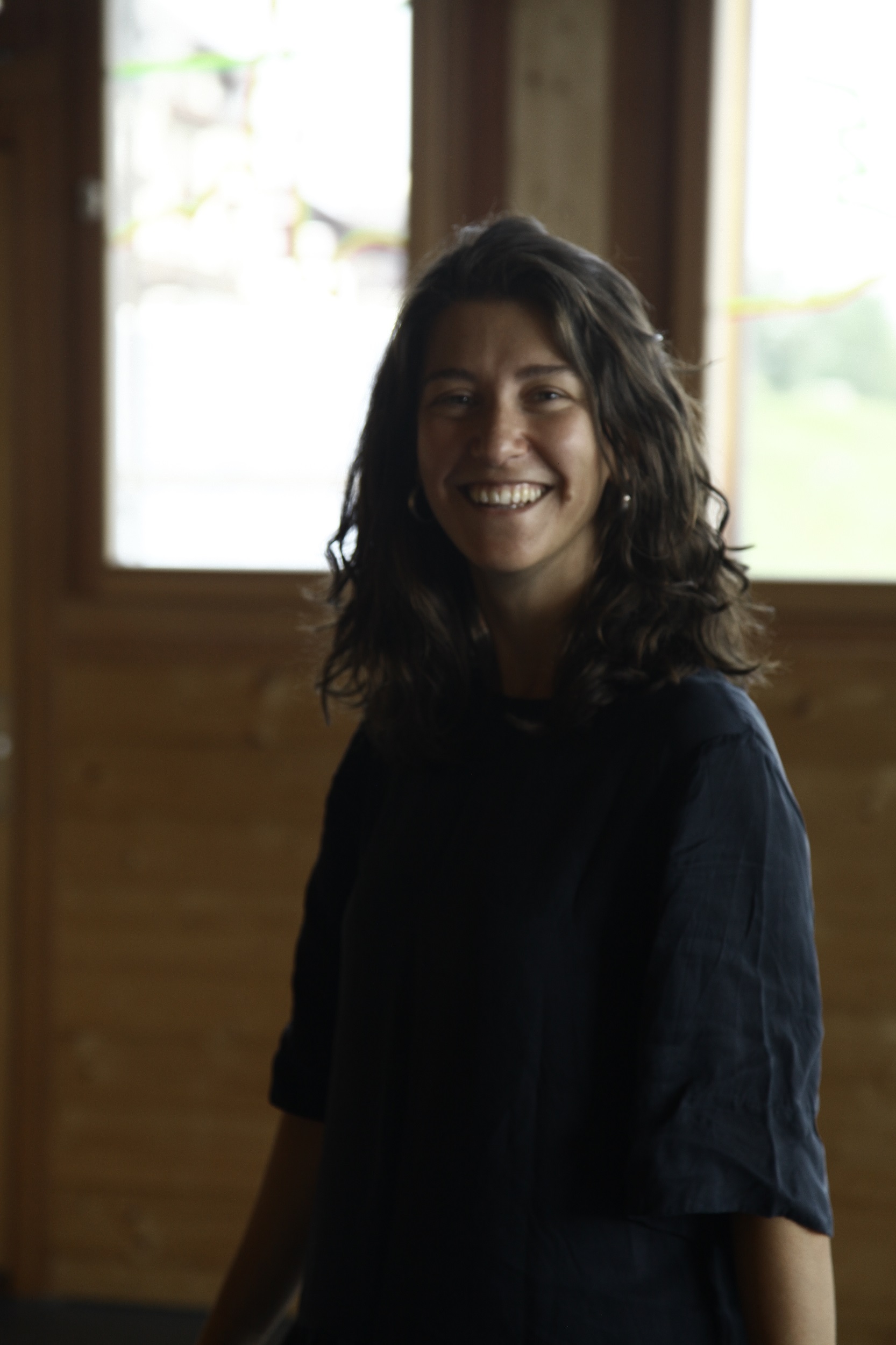
About the author
Anna-Maria (Marie) Georgarakis is a doctoral student with Professor Robert Riener at the Sensory-Motor Systems Lab. She strives to improve the lives of patients with muscle weakness by means of soft wearable assistive technology.

